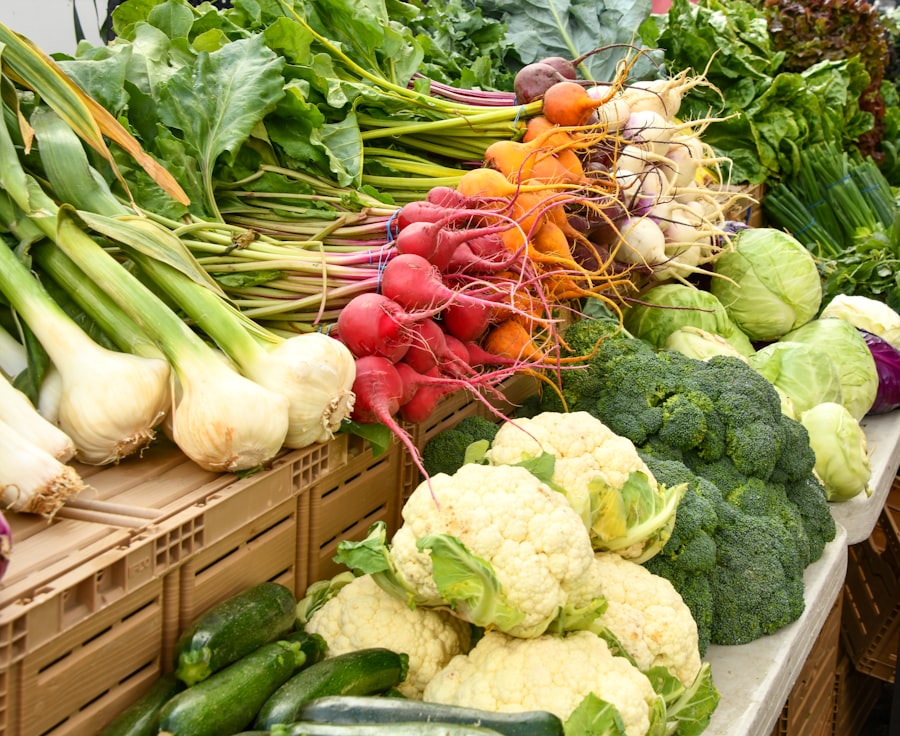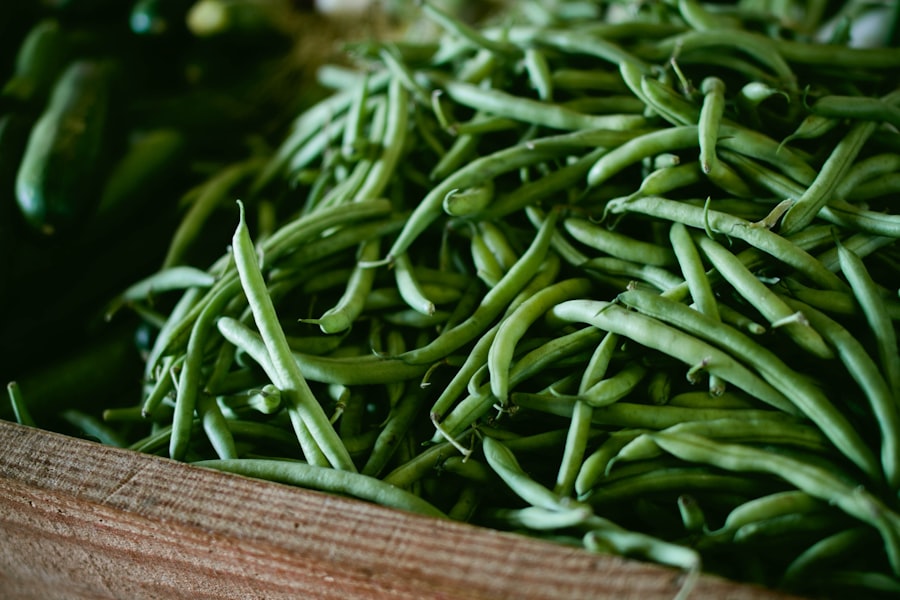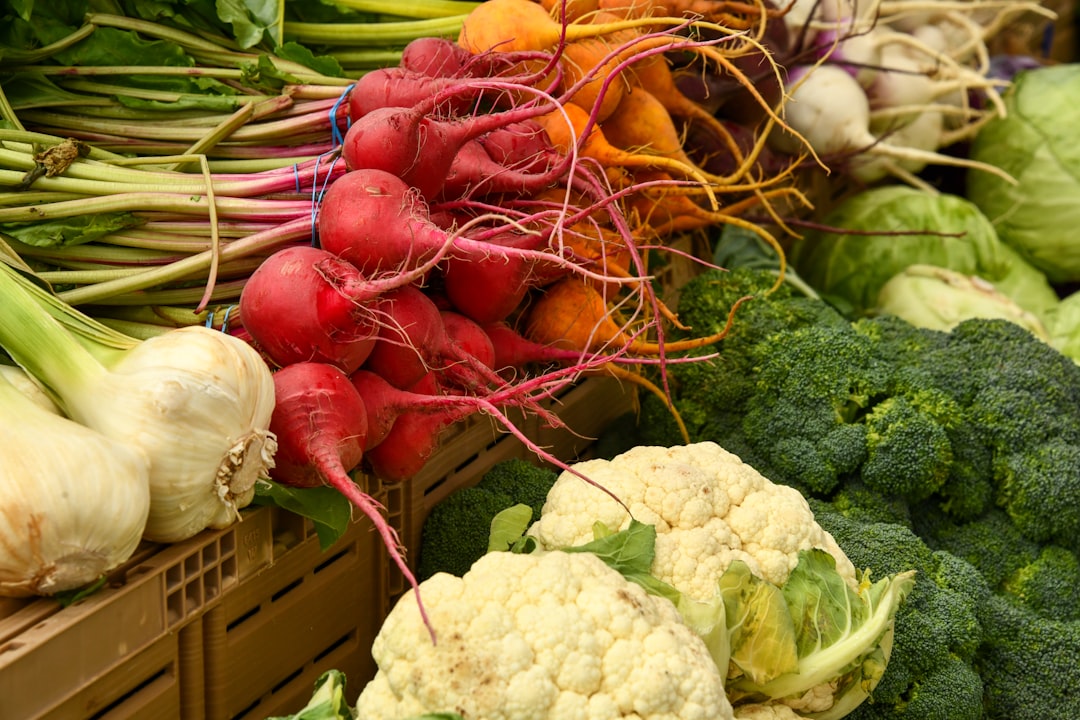In today’s globalized world, the notion of year-round availability of produce has become a common expectation among consumers. Supermarkets are stocked with a dazzling array of fruits and vegetables, regardless of the season. This illusion is largely facilitated by advancements in transportation and agricultural practices, which allow for the importation of out-of-season produce from distant regions.
Shoppers can find strawberries in winter and tomatoes in early spring, creating a false sense of abundance that masks the natural rhythms of agriculture. This convenience, however, comes at a cost that extends beyond mere economics. The perception that fresh produce is always available can lead to a disconnect between consumers and the agricultural cycles that govern food production.
Many individuals may not realize that certain fruits and vegetables have specific growing seasons, which are influenced by climate and soil conditions. This disconnection can foster a lack of appreciation for the natural world and its seasonal changes, ultimately impacting dietary habits and food choices. As people become accustomed to having everything at their fingertips, they may overlook the benefits of eating in harmony with nature’s cycles.
Key Takeaways
- Year-round availability of produce often relies on environmentally harmful practices and global transportation.
- Out-of-season fruits and vegetables can have lower nutritional value compared to seasonal options.
- Consistently consuming out-of-season produce negatively impacts local farmers and economies.
- Technology enables the production of always in season produce but may come with hidden ecological costs.
- Embracing seasonal eating supports sustainability, local agriculture, and cultural food traditions.
The Environmental Impact of Out-of-Season Produce
The environmental consequences of consuming out-of-season produce are significant and multifaceted. Transporting fruits and vegetables across vast distances requires substantial energy, primarily derived from fossil fuels. This transportation contributes to greenhouse gas emissions, exacerbating climate change and its associated impacts on ecosystems.
Furthermore, the cultivation of out-of-season produce often involves intensive agricultural practices that can deplete soil health and biodiversity. The reliance on chemical fertilizers and pesticides to ensure consistent yields can lead to soil degradation and water pollution, creating a ripple effect that harms local ecosystems. In addition to the carbon footprint associated with transportation, the environmental impact extends to water usage.
Many regions that produce out-of-season crops rely on irrigation systems that can strain local water resources, particularly in areas already facing water scarcity. The demand for certain fruits and vegetables year-round can lead to unsustainable farming practices that prioritize short-term gains over long-term ecological health. As consumers become more aware of these issues, the importance of supporting seasonal produce becomes increasingly evident.
The True Cost of Always in Season Produce

While the convenience of always-in-season produce may seem appealing, the true cost encompasses more than just monetary value. The price tag on out-of-season fruits and vegetables often reflects hidden expenses related to environmental degradation, labor practices, and health impacts. For instance, the use of pesticides and herbicides in non-organic farming can pose risks not only to farmworkers but also to consumers who ingest residues on their food.
Additionally, the reliance on monoculture farming practices can diminish biodiversity, making crops more susceptible to pests and diseases. Moreover, the economic implications of always-in-season produce can be detrimental to local farmers who rely on seasonal cycles for their livelihoods. When consumers prioritize imported goods over locally grown produce, they inadvertently undermine the economic stability of their communities.
This shift can lead to a decline in local agriculture, resulting in fewer options for fresh, nutritious food and a loss of cultural heritage tied to traditional farming practices. Understanding these hidden costs is essential for making informed choices about food consumption.
The nutritional differences between seasonal and out-of-season produce are noteworthy and can significantly impact overall health. Fruits and vegetables that are harvested at their peak ripeness tend to be more nutrient-dense than those picked prematurely for transport.
In contrast, out-of-season produce may be picked before it reaches maturity, leading to diminished nutritional value. Additionally, seasonal eating encourages a diverse diet that aligns with the natural availability of foods throughout the year. This variety not only enhances culinary experiences but also provides a broader spectrum of nutrients essential for maintaining health.
By consuming seasonal produce, individuals can benefit from a range of flavors and textures while supporting their bodies with the nutrients they need during different times of the year. Embracing seasonal eating can lead to improved health outcomes and a deeper connection to the food one consumes.
How Out-of-Season Produce Affects Local Farmers
| Metric | Impact on Local Farmers | Details |
|---|---|---|
| Revenue Loss (%) | 15-30% | Farmers experience a decrease in income due to competition from cheaper out-of-season imports. |
| Market Share Reduction | 20% | Local produce loses shelf space and consumer attention to imported out-of-season fruits and vegetables. |
| Crop Diversification | Increase by 10% | Farmers diversify crops to compete with out-of-season produce availability. |
| Employment Impact | 5-10% job reduction | Lower demand for local produce can lead to fewer seasonal farm labor jobs. |
| Price Fluctuation | Up to 25% decrease | Prices for local produce drop when out-of-season imports flood the market. |
| Consumer Preference Shift | 30% prefer year-round availability | Consumers increasingly expect produce availability regardless of season, impacting local seasonal sales. |
The demand for out-of-season produce has profound implications for local farmers who strive to cultivate crops in accordance with natural growing seasons. When consumers opt for imported fruits and vegetables over locally grown options, they inadvertently contribute to a cycle that undermines local agriculture. Farmers who rely on seasonal crops may find it increasingly challenging to compete with cheaper imports that flood the market year-round.
This competition can lead to financial strain for local producers, forcing some to abandon traditional farming practices in favor of more intensive methods that prioritize yield over sustainability. Moreover, the reliance on out-of-season produce can erode community ties between consumers and local farmers. When shoppers prioritize convenience over supporting local agriculture, they miss out on opportunities to engage with their food sources and understand the challenges faced by farmers in their region.
Building relationships with local producers fosters a sense of community and encourages sustainable practices that benefit both farmers and consumers alike. By choosing seasonal produce, individuals can help sustain local economies while promoting agricultural diversity.
The Role of Technology in Creating Always in Season Produce
Advancements in technology have played a pivotal role in enabling the availability of always-in-season produce. Innovations in agricultural practices, such as hydroponics and controlled-environment agriculture, allow for year-round cultivation of certain crops regardless of external weather conditions. These technologies can optimize growth conditions, leading to increased yields and reduced reliance on pesticides.
However, while these methods may offer short-term benefits, they also raise questions about sustainability and long-term ecological impacts. Additionally, transportation technologies have made it possible to ship fresh produce across vast distances with minimal spoilage. Refrigerated transport systems ensure that fruits and vegetables remain fresh during transit, allowing consumers access to a wide variety of foods regardless of seasonality.
However, this convenience comes at an environmental cost, as the carbon footprint associated with long-distance transportation continues to grow. As technology continues to evolve, it is crucial for consumers to consider the broader implications of their food choices and seek out sustainable alternatives.
The Importance of Eating Seasonally

Eating seasonally is not merely a trend; it is a practice rooted in sustainability and health that offers numerous benefits for individuals and communities alike. By aligning food choices with the natural growing seasons, individuals can enjoy fresher, tastier produce while minimizing their environmental impact. Seasonal eating encourages a deeper connection to food sources and fosters an appreciation for the agricultural cycles that sustain us.
It also promotes biodiversity by supporting a wider variety of crops rather than relying on a few staples year-round. Moreover, seasonal eating can enhance culinary creativity as individuals explore new recipes and flavors associated with different times of the year. This practice encourages people to experiment with ingredients they may not typically use, leading to a more diverse diet rich in nutrients.
Tips for Finding and Enjoying Seasonal Produce
Finding and enjoying seasonal produce can be an enriching experience that enhances both culinary skills and overall well-being. One effective way to discover what is in season is by visiting local farmers’ markets or joining community-supported agriculture (CSA) programs. These initiatives connect consumers directly with local farmers, providing access to fresh produce while fostering relationships within the community.
Additionally, many grocery stores now label seasonal items or offer information about local sourcing, making it easier for consumers to make informed choices. Another tip for enjoying seasonal produce is to experiment with cooking techniques that highlight the unique flavors of each ingredient. For instance, roasting root vegetables in the fall or grilling summer squash can bring out their natural sweetness while creating delicious meals.
Incorporating seasonal ingredients into everyday cooking not only enhances flavor but also encourages creativity in the kitchen. By embracing seasonal produce, individuals can cultivate a deeper appreciation for food while supporting sustainable practices.
Supporting Sustainable Agriculture and Seasonal Eating
Supporting sustainable agriculture is essential for promoting healthy ecosystems and ensuring food security for future generations. By prioritizing seasonal eating habits, individuals can contribute to a more resilient food system that values local producers and environmentally friendly practices. Choosing organic or sustainably grown produce helps reduce reliance on harmful chemicals while promoting biodiversity within agricultural landscapes.
Moreover, advocating for policies that support sustainable farming practices can create lasting change within communities. Engaging with local governments or organizations focused on sustainable agriculture can amplify efforts to promote environmentally responsible farming methods. By becoming informed consumers who prioritize sustainability in their food choices, individuals play an active role in shaping a healthier future for both people and the planet.
The Cultural and Historical Significance of Seasonal Eating
Seasonal eating is deeply intertwined with cultural traditions and historical practices across various societies worldwide. Many cultures have developed culinary customs based on the availability of local ingredients throughout the year. These traditions often reflect regional climates, agricultural practices, and historical events that have shaped food systems over generations.
By embracing seasonal eating habits today, individuals honor these cultural legacies while fostering connections between past and present. Furthermore, seasonal eating serves as a reminder of humanity’s relationship with nature—a relationship that has evolved over millennia but remains vital in contemporary society. As people become increasingly disconnected from their food sources due to industrialization and globalization, returning to seasonal eating practices offers an opportunity for reconnection with both culture and environment.
Embracing the Beauty of Seasonal Varieties
The beauty of seasonal varieties lies not only in their vibrant colors but also in their unique flavors and textures that change throughout the year. Each season brings forth an array of fruits and vegetables that reflect the natural cycles of growth and decay—an ever-changing tapestry that invites exploration and appreciation. From crisp apples in autumn to juicy peaches in summer, each bite tells a story rooted in place and time.
Embracing seasonal varieties encourages individuals to celebrate diversity within their diets while fostering curiosity about new ingredients. This exploration can lead to delightful culinary discoveries as people experiment with unfamiliar flavors or learn new cooking techniques tailored to specific seasons. Ultimately, embracing the beauty of seasonal produce enriches both personal experiences with food and collective efforts toward sustainability—reminding everyone that nature’s bounty is best enjoyed when it aligns with its natural rhythms.
The concept of “always in season” produce can often be misleading, as many fruits and vegetables have specific growing seasons that affect their flavor, nutritional value, and environmental impact. For a deeper understanding of this topic, you can read more in the article found at Hey Did You Know This, which explores the implications of consuming out-of-season produce and offers insights into seasonal eating practices.
WATCH THIS! The 100-Year Lie That Built Your Grocery Store — The Hidden Truth About “Fresh” Produce
FAQs
What does “always in season produce” mean?
“Always in season produce” refers to fruits and vegetables that are marketed as being available year-round, regardless of their natural growing seasons.
Is it true that some produce is available all year naturally?
No, most fruits and vegetables have specific growing seasons. Availability year-round often depends on imports, greenhouse growing, or storage techniques rather than natural seasonal growth.
Why is the concept of “always in season” considered a lie?
It is considered misleading because it suggests that certain produce is naturally available throughout the year, ignoring the environmental and economic impacts of importing or artificially growing out-of-season items.
How does importing produce affect the environment?
Importing out-of-season produce often involves long-distance transportation, which increases carbon emissions and contributes to environmental degradation.
What are the benefits of eating seasonal produce?
Seasonal produce is typically fresher, more flavorful, more nutritious, and often less expensive. It also supports local farmers and reduces environmental impact.
Can greenhouse farming make produce available year-round?
Yes, greenhouse farming can extend growing seasons and produce certain crops year-round, but it requires energy and resources, which may have environmental costs.
How can consumers identify truly seasonal produce?
Consumers can check local farmers’ markets, seasonal produce guides, or consult local agricultural resources to learn which fruits and vegetables are in season in their region.
Does eating out-of-season produce affect food quality?
Out-of-season produce may be harvested early and shipped long distances, which can reduce freshness, flavor, and nutritional value compared to in-season options.
What role do supermarkets play in the “always in season” myth?
Supermarkets often stock produce year-round to meet consumer demand, relying on imports and storage, which can perpetuate the misconception that all produce is naturally available all year.
How can consumers make more sustainable choices regarding produce?
Consumers can prioritize buying local, seasonal produce, reduce food waste, and support sustainable farming practices to minimize environmental impact.
